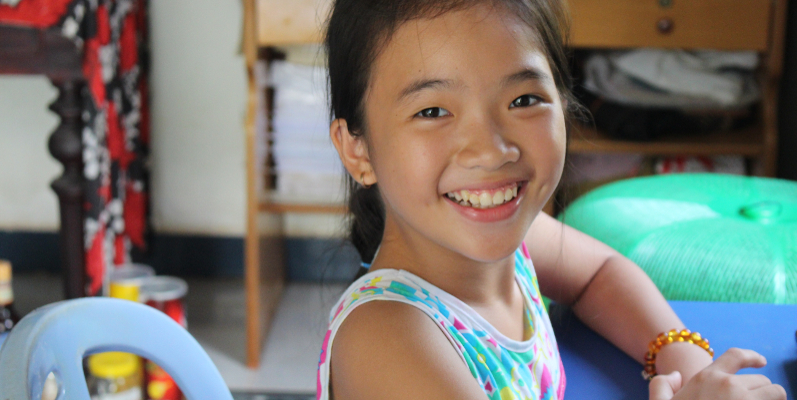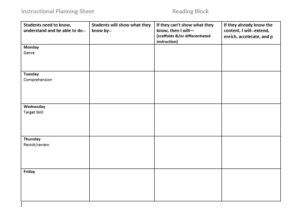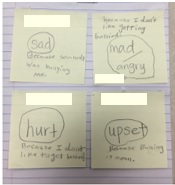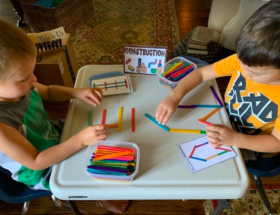When I first became an instructional coach and found myself planning with teachers, I focused almost exclusively on instruction. I’d had over two decades in education, had read dozens of professional books and attended countless teacher training sessions. I believed myself to be an expert on effective instruction.
But several years ago everything changed. I learned about professional learning communities and came to understand “that the core mission of formal education is not simply to ensure that students are taught but to ensure that they learn”. My commitment, at that point as I coached, was to make sure that students learned. I set out on a mission to become an expert on student learning.
Fortunately, there are a ton of resources I could access to continue my quest. In addition to all the exceptional professional books about student learning available to me, I’ve met a whole host of educators on social media who have become mentors, collaborative colleagues and friends.
The amount of information I accessed became a problem in and of itself. How in the world could I distill all that information into “bite-size” pieces for new teachers that I coach? How would I help veteran teachers I support take on yet another (one among many) new way to approach meeting the educational needs of every student?
Seems like an almost impossible task?
Turns out it wasn’t.
On my drive to work one morning, I had a thought that morphed into a single document that I use with teachers (rookies and veterans) when planning for student learning. This one tool facilitates collaborative discussions with teachers that allows us to plan strategically for students and their unique needs.
What Should Students Know?
The simple tool includes columns with statements based on the the four essential PLC questions, rows for the days of the week and space for abbreviated notes for instructional planning.
While discussing what students should know, understand and be able to do, the teacher and I look closely at the standards. We have an opportunity to deconstruct the standard for essential learning and restate the information in the form of a learning target or outcome. A close look at how students will be assessed on the unit summative assessment and the state released tests allows us to more closely align the written, the taught and the assessed curriculum.
How Will We Know the Students Have Learned?
Asking how we’ll know the student has learned the content allows us to design simple formative assessments that give us “real time” data on how well students are learning. At this point we look closely at a variety of ways to assess, making sure to focus on simplicity and checking to see that the informal assessment allows for quick and easy collection of actionable data. Technology tools like Kahoot and Socrative as well as paper/pencil tasks like exit tickets or simple writing tasks assist the teacher in collecting valuable information about student learning.
How Will We Respond If Students Don’t Learn?
The remaining columns “How will we respond when students don’t learn?” and “How will we respond when students already know the content?” provide opportunity for the teacher to plan for the unique needs of specific students.
These two columns give us the chance to plan ahead of time for possible “tricky bits” that arise for some students. In the third column we jot notes about comprehensible input and low stress output ideas for ELL students. We make comments on the planning sheet about the way in which we’ll design the environment, create materials and orchestrate engagement strategies (Kagan structures for instance) that support our students who need wait time, repetition and lots of discussion and writing to enhance their learning.
This column also allows us to think about students who will need specific behavior interventions so that the learning is optimal for them as well.
One student in particular was a real concern for Mrs. B. She shared that when writing workshop begins the student quickly becomes upset. He sits on the floor, crawls under the desk and refuses to write. Nothing that she said had been able to convince the student that she was there to fully support him through the writing task. When we planned for the next week, we talked specifically about ways she could set up the environment and break the writing task down into manageable pieces for this student. Mrs. B. created a four square post-it note tool to engage the student in conversation to organize his thoughts in order to write.
Using the instructional planning sheet gave us time to discuss the scaffolds the teacher would put in place, the pacing, and the additional supports to minimize potential behavior issues.
When Mrs. B. and I met later to reflect on the student learning, she shared with me that the tool she’d designed for this student had been successful. She felt encouraged that she would be able to continue planning for his specific needs during writing workshop until he no longer needed the scaffolding currently in place.
How Will We Respond If Students Already Know?
Intentionally discussing the question in the final column (How will we respond when students already know the content?) allows us to collaborate in ways that support advanced and/or gifted students. Discussions about ways to extend the learning by providing individual study options or projects aligned to the standards is critical in meeting the needs of students performing above grade level.
Also this week, while planning with Mrs. B., we were able to strategically design the environment and delivery of the content so that her students (with their varying academic and behavior needs) had opportunity for authentic learning. We planned specific extensions for several of her students that are gifted and remain in her classroom for a portion of the language arts content.
We can’t afford to wait until the end of the week when assignments are graded or analyze student data at the completion of a unit of study to determine what interventions are essential or what extension of learning is necessary. The instructional planning process allows me to coach teachers to anticipate student needs (academic and behavioral), consider options ahead of time and plan instruction that has an irrefutable commitment to student learning.
One simple tool.
One effective resource that leads to ensuring that every student learns.












